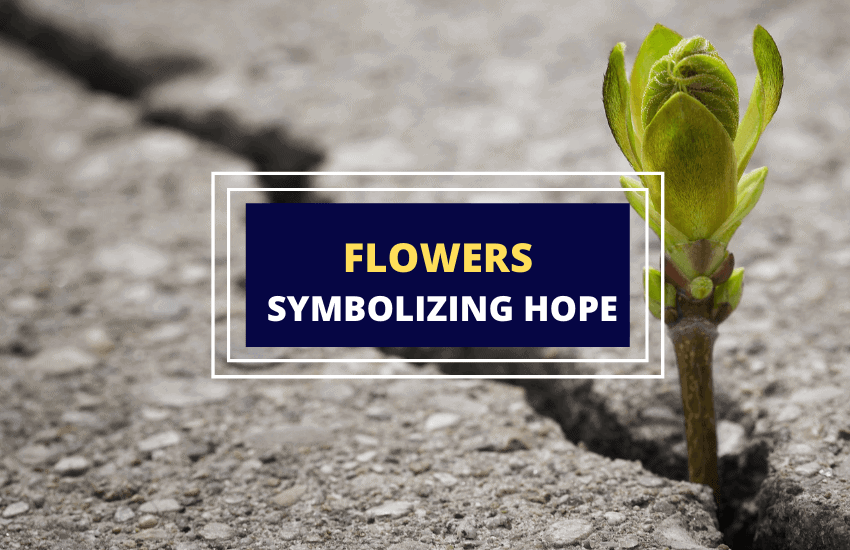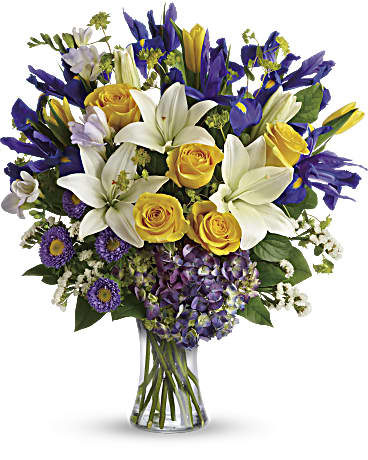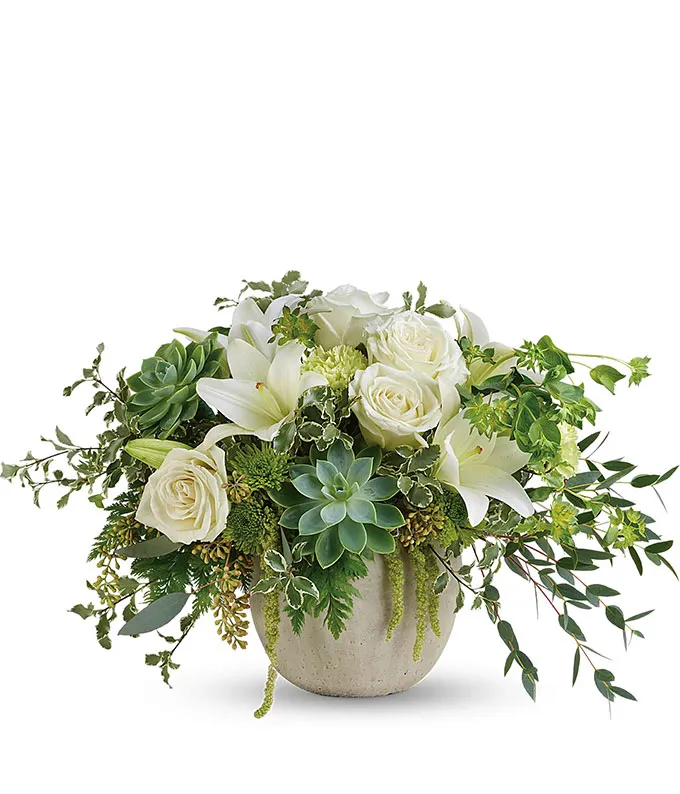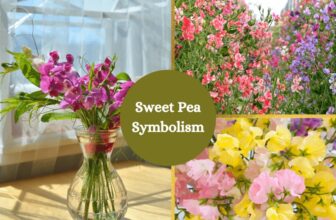
Table of Contents
Are you looking to start your garden or style a bouquet for someone who’s going through a rough patch? Flowers that symbolize good luck and hope are a great addition to your garden or to give as a gift. These flowers promote positive feelings, making gardens look brighter and lighting up the faces of people who receive them as gifts. Read on to learn which flowers symbolize hope and strength in different cultures.
While most flowers are beautiful, not all of them express positive thoughts and feelings. However, if you’re looking for flowers that you can give to someone who’s struggling, the following plants that symbolize hope are worth considering.
Flowers That Mean Hope
Iris

Irises are easy-to-grow plants that are native to the northern hemisphere. They are popular for their beautifully shaped and colorful blooms.
Iris often flower through the winter, making them a great option for the cold months. Their ability to thrive in inhospitable climates and environments associate them with resilience and hope.
Irises are a popular symbol of trust, hope, and wisdom, as well as friendship and courage. It also signifies victory and power in some cultures.
Centaurea
Centaurea is a genus of a plant that has hairy stems and lance-shaped leaves, which include flowers such as the cornflower.
The name Centaurea comes from the Greek word kentauros which means centaur in English. In Greek mythology, Chiron was a centaur popular for his wisdom and expertise in medicine. It’s said that he used Centaurea flowers to heal his wounds. He then became known for teaching others about the secret healing properties of herbs.
Centaurea symbolizes not only hope but also devotion, anticipation, love, and fertility. It can also represent good fortune, prosperity, and wealth.
Eranthis
Eranthis is a type of tuberous perennial that is native to Asia and southern Europe. They are striking winter flowers that often appear with Snowdrops. Their distinct cup-shaped flowers are typically white or yellow. They are easy to grow and can withstand frost and snow.
The meaning of the name eranthis comes from the words er, which means spring, and anthos, which means flower. It is also known as Winter Aconite because its leaves resemble the genus Aconitum. This flower symbolizes new beginnings, rebirth, and hope because it is one of the earliest blooms in spring.
Snowdrop
Snowdrop, also known as galanthus, originated in the Middle East and Europe. It’s part of a bulbous plant that belongs to the Amaryllidaceae family. These plants have white, bell-shaped flowers that loosely hang down from their stems, giving them an air of modesty.
The name galanthus comes from the Greek words gala, which means milk, and anthos, which means flower. This refers to the flowers milk white color. Their color and fragile appearance make them a common symbol of modesty, purity, innocence, and hope.
Like eranthis flowers, snowdrops are a popular symbol of rebirth because they’re one of the first blooms in spring.
Snowflakes
Snowflakes, or leucojum, are Eurasia natives that have pendulous, bell-shaped flowers and grass-like foliage. They are quite small in size but are fragrant and beautiful flowers. Their name comes from the words leukos and ion, meaning white and violet, a reference to the plants color. Snowflakes commonly bloom in summer and spring. Their white flowers symbolize purity, while its early blooms in spring represent hope and a new chapter to look forward to.
Forget Me Not
Forget Me Nots, also called Myosotis, have tiny flowers that are typically blue but also have some pink and white hues. The name mysotis comes from the Greek word for mouse’s ear, as the leaves of the plant resemble a mouse’s ear. However, its common name Forget Me Not has a much more romantic origin.
Legend has it that during medieval times, a knight was walking by the river with his lady. As he bent to pick some flowers for her, he lost his balance because of his heavy armor and fell into the river. As he was swept away in the currents, he tossed the flowers toward her and cried out, “Forget me not!”.
This romantic story has given Forget Me Nots a sad association. However, it also represents remembrance, hope, and undying love.
Prickly Pear
Prickly Pear, also known as Opuntia, is part of the cactus family. It has a unique structure and shape, with green segments called cladodes that store water. These spines protect plants against predators. Its yellow, cup-shaped flowers are especially attractive and easy to grow, making them a perfect addition to any garden.
Opuntia received its name from Opus, an ancient Greek city. Prickly Pear, its common name, refers to its spiny fruits with a pear-like texture. It is viewed in various cultures as a symbol of hope and life because these amazing plants can survive even the harshest conditions.
Petunia
Petunias are popular for their funnel-shaped, colorful flowers. It’s related to the tobacco plant, another member of the nightshade family. In the 16th Century, a group of Spanish explorers discovered petunias and named them Petun, meaning worthless tobacco plant, possibly because it looked like the tobacco plant but didn’t have the same properties.
Petunias weren’t exactly popular in the past. They are even known to symbolize negative feelings like resentment and anger. However, they can also symbolize good concepts like love, respect, and hope. Their meaning largely depends on the occasion as well as the relationship between the giver and the recipient.
History of Flower Symbolism

Symbolic meanings have always been attached to flowers, so much so that the Language of Flowers has become part of the fabric of Western culture. Concepts such as love, hope, anger, disdain, contempt, adoration, and so on can all be represented by flowers. For example, amaranth signified hopelessness, while an iris or snowdrop represented hope.
In the 1800s, learning about the meaning of flowers became one of the most popular pastimes. Most Victorian homes back then had guidebooks that explain what each flower means, although different sources usually assign different meanings to each flower. Flower symbolism was extremely popular in the Victorian era because it helped deliver messages that people couldn’t speak out loud. Flowers, and how they were given, were even used to answer yes or no questions. For example, flowers being handed over with the left hand meant no, while flowers handed over with the right hand meant yes.
Plants were also given to others to express negative feelings like bitterness and even conceit. When a person received a rose that declared someone’s devotion to them, they could decline by sending back a yellow carnation that meant disdain.
Wrapping Up
Whether you are arranging a bouquet for someone or thinking of starting your garden, flowers that symbolize hope are a great place to start. From beautiful irises to controversial petunias, there are a lot of low-maintenance plants that will serve your purpose.








